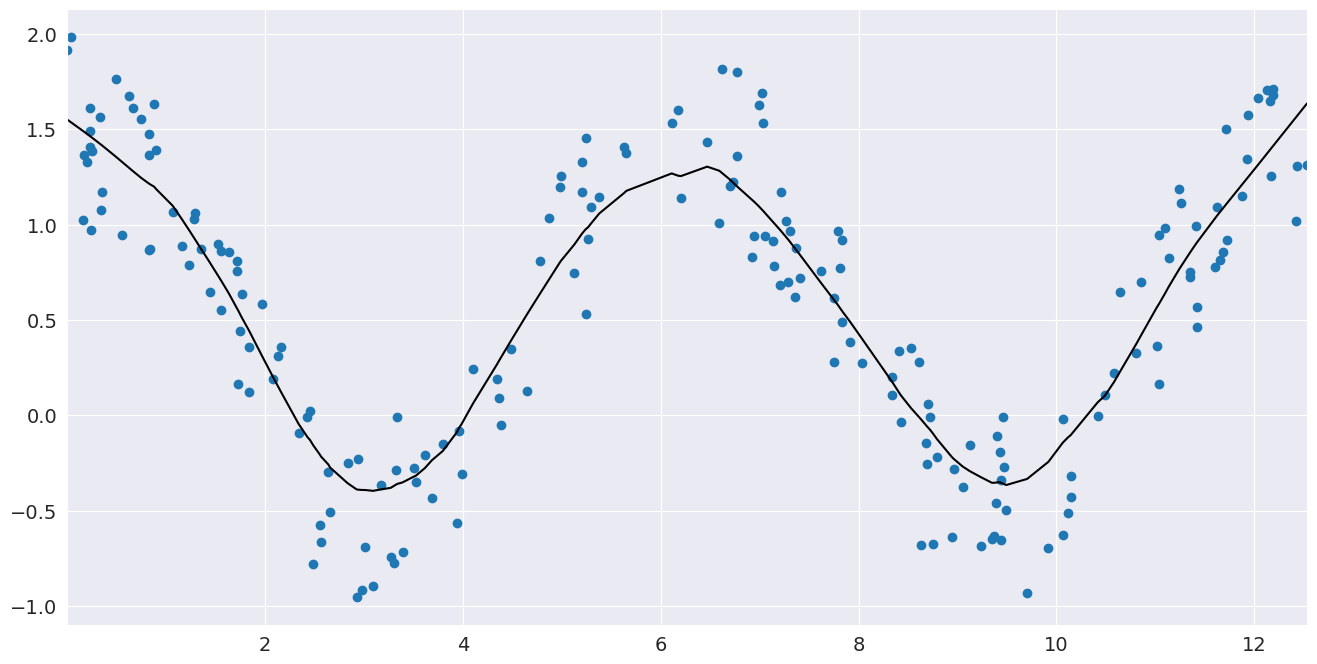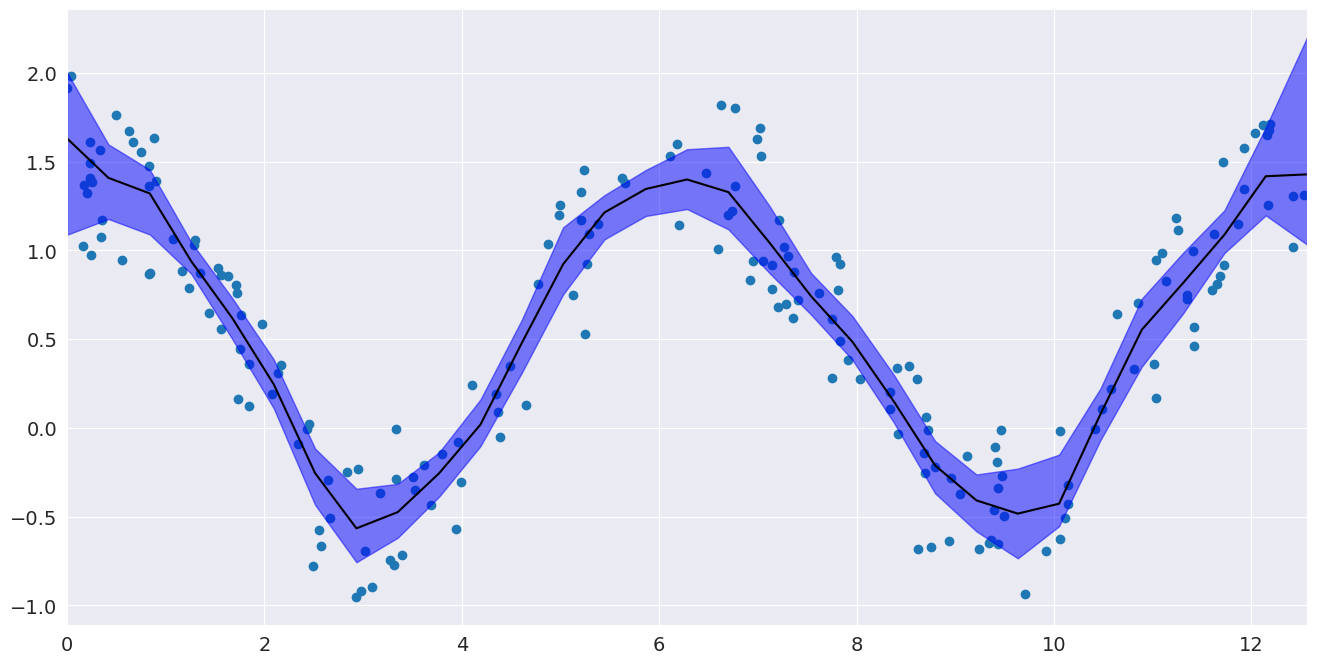LOWESS 平滑器¶
此笔记本介绍了 nonparametric 包中的 LOWESS 平滑器。LOWESS 执行加权局部线性拟合。
我们生成了一些非线性数据并执行 LOWESS 拟合,然后通过执行引导重采样计算 LOWESS 拟合周围的 95% 置信区间。
[1]:
import numpy as np
import pylab
import seaborn as sns
import statsmodels.api as sm
sns.set_style("darkgrid")
pylab.rc("figure", figsize=(16, 8))
pylab.rc("font", size=14)
[2]:
# Seed for consistency
np.random.seed(1)
[3]:
# Generate data looking like cosine
x = np.random.uniform(0, 4 * np.pi, size=200)
y = np.cos(x) + np.random.random(size=len(x))
# Compute a lowess smoothing of the data
smoothed = sm.nonparametric.lowess(exog=x, endog=y, frac=0.2)
[4]:
# Plot the fit line
fig, ax = pylab.subplots()
ax.scatter(x, y)
ax.plot(smoothed[:, 0], smoothed[:, 1], c="k")
pylab.autoscale(enable=True, axis="x", tight=True)

置信区间¶
现在我们已经执行了拟合,我们可能想知道它的精确度。引导重采样提供了一种通过对我们的数据进行大量随机重采样重新计算 LOWESS 拟合来估计 LOWESS 拟合周围的置信区间的方法。
[5]:
# Now create a bootstrap confidence interval around the a LOWESS fit
def lowess_with_confidence_bounds(
x, y, eval_x, N=200, conf_interval=0.95, lowess_kw=None
):
"""
Perform Lowess regression and determine a confidence interval by bootstrap resampling
"""
# Lowess smoothing
smoothed = sm.nonparametric.lowess(exog=x, endog=y, xvals=eval_x, **lowess_kw)
# Perform bootstrap resamplings of the data
# and evaluate the smoothing at a fixed set of points
smoothed_values = np.empty((N, len(eval_x)))
for i in range(N):
sample = np.random.choice(len(x), len(x), replace=True)
sampled_x = x[sample]
sampled_y = y[sample]
smoothed_values[i] = sm.nonparametric.lowess(
exog=sampled_x, endog=sampled_y, xvals=eval_x, **lowess_kw
)
# Get the confidence interval
sorted_values = np.sort(smoothed_values, axis=0)
bound = int(N * (1 - conf_interval) / 2)
bottom = sorted_values[bound - 1]
top = sorted_values[-bound]
return smoothed, bottom, top
# Compute the 95% confidence interval
eval_x = np.linspace(0, 4 * np.pi, 31)
smoothed, bottom, top = lowess_with_confidence_bounds(
x, y, eval_x, lowess_kw={"frac": 0.1}
)
[6]:
# Plot the confidence interval and fit
fig, ax = pylab.subplots()
ax.scatter(x, y)
ax.plot(eval_x, smoothed, c="k")
ax.fill_between(eval_x, bottom, top, alpha=0.5, color="b")
pylab.autoscale(enable=True, axis="x", tight=True)

最后更新时间:2024 年 10 月 3 日